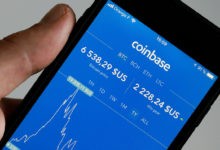Uniswap’s Proposed ‘Fee Switch’ Would Cut Into Liquidity Provider Payouts

Decentralized cryptocurrency exchange Uniswap is currently discussing whether or not it should implement the “fee switch.”
Uniswap currently imposes a 0.3% fee for trading tokens on the platform. Revenue generated by the fee is immediately placed into liquidity reserves, and liquidity providers (LPs) receive a payout dependent on their contribution to the liquidity pool.
The proposed fee switch, otherwise known as the protocol charge, would direct 0.25% of the 0.3% fee to LPs, and the remaining 0.05% will supposedly go to UNI token holders.
At the time of writing, Uniswap’s 24-hour trade volume is a little over $1.2 billion, ranking it the top DEX (decentralized exchange) by volume. This number is still significantly less than top centralized exchange Binance’s 24-hour trade volume, which reached almost $13.8 billion, implying that traders are still prioritizing centralized exchanges over decentralized ones.
So far, the only certain thing is that the “accumulated protocol fees can be collected by UNI governance.” But UNI token holders have long envisioned a portion of the protocol fees eventually accruing to DAO members — similar to rival DEX Sushi, which employs a staking mechanism.
Although UNI holders have the power to activate the fee through a governance vote, many are afraid that doing so could substantially drop UNI’s dominance in the DEX market as LPs begin moving their liquidity elsewhere.
“Liquidity providers’ main incentive to take on impermanent loss risk is the return on investment from trading fees, and these returns are already minimal,” Matt Fiebach, research analyst at Blockworks, said.
“Suppose the protocol fee reduces returns to the point that they can no longer turn a profit. In that case, they will be forced to move liquidity elsewhere or stop providing automated market maker liquidity altogether. In this outcome, traders may receive better prices on other DEXs, causing Uniswap dominance to fall,” Fiebach said.
The existing discussion prompted by community member Leighton Cusack, founder of DeFi protocol PoolTogether, suggests testing the fee switch with two of the most important pools on Uniswap: ETH/USDC and UDSC/USDT — drawing concerns from a handful of community members.
“I think using 2 of the largest and most important pools is pretty high risk,” John Palmer, Uniswap committee member, wrote in the discussion forum. “Personally, I would prefer to try something like this on a couple of smaller but significant pools to start before going this big.”
A decentralized exchange is only valuable if it has liquidity depth, and the risk of LPs moving holdings from Uniswap could be greater than the benefits. Proposals to experiment with smaller pools on the exchange are currently popular among many community members to reduce potential loss.
“I think it would be better to start out with less important pools [or] pools that provide relatively less utility to traders,” delegate MonetSupply wrote. “If LPs are put off by the protocol fees, they may be interested to move their liquidity to the lower fee tier pools which would provide improved utility to the Uniswap ecosystem.”
Uniswap currently is not strapped for cash, a community member going by BJP3333 wrote. “Taking fees away from LPs should be a last resort. Let’s explore other income-generating ideas first that don’t have this negative effect on the LPs,” he wrote.
As Uniswap is one of the biggest DeFi protocols, many competitors will likely be keeping an eye out on the decisions the organization ultimately makes.






 Bitcoin
Bitcoin  Ethereum
Ethereum  Tether
Tether  USDC
USDC  Dogecoin
Dogecoin  Cardano
Cardano  TRON
TRON  Chainlink
Chainlink  Stellar
Stellar  Bitcoin Cash
Bitcoin Cash  LEO Token
LEO Token  Hedera
Hedera  Litecoin
Litecoin  Monero
Monero  Dai
Dai  OKB
OKB  Cronos
Cronos  Ethereum Classic
Ethereum Classic  Gate
Gate  VeChain
VeChain  Cosmos Hub
Cosmos Hub  Algorand
Algorand  KuCoin
KuCoin  Stacks
Stacks  Maker
Maker  Zcash
Zcash  Theta Network
Theta Network  Tether Gold
Tether Gold  IOTA
IOTA  Tezos
Tezos  TrueUSD
TrueUSD  NEO
NEO  Polygon
Polygon  Dash
Dash  Synthetix Network
Synthetix Network  Decred
Decred  Zilliqa
Zilliqa  Qtum
Qtum  0x Protocol
0x Protocol  Basic Attention
Basic Attention  Holo
Holo  Siacoin
Siacoin  Status
Status  Ravencoin
Ravencoin  DigiByte
DigiByte  Enjin Coin
Enjin Coin  Nano
Nano  Ontology
Ontology  Hive
Hive  Waves
Waves  Lisk
Lisk  NEM
NEM  Steem
Steem  Pax Dollar
Pax Dollar  Numeraire
Numeraire  BUSD
BUSD  Huobi
Huobi  OMG Network
OMG Network  Bitcoin Gold
Bitcoin Gold  Ren
Ren  Bitcoin Diamond
Bitcoin Diamond  Augur
Augur  HUSD
HUSD